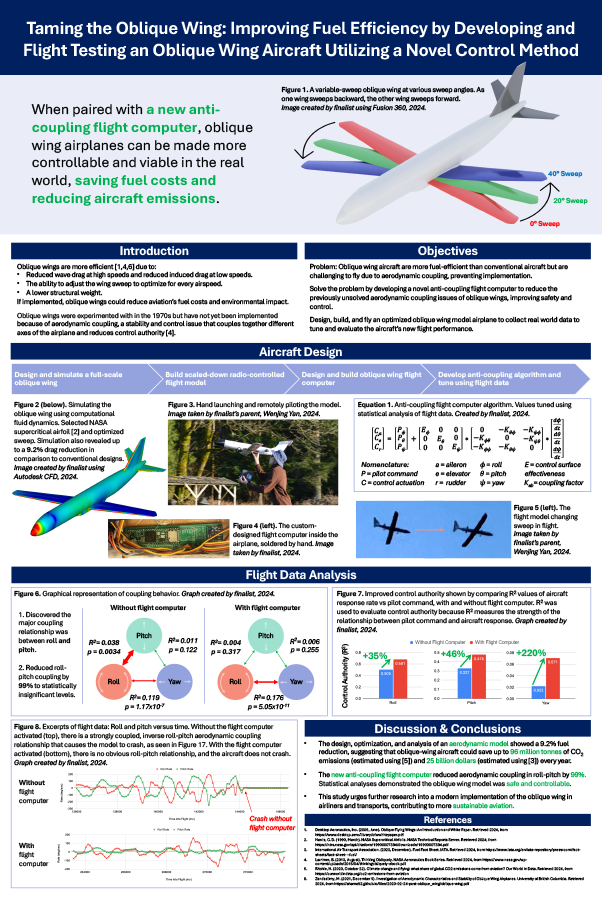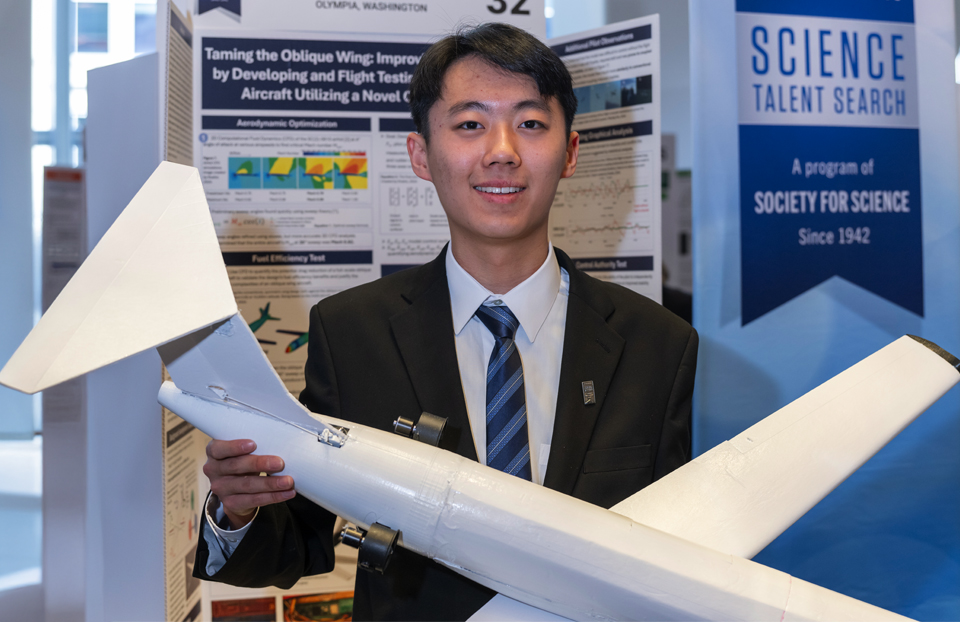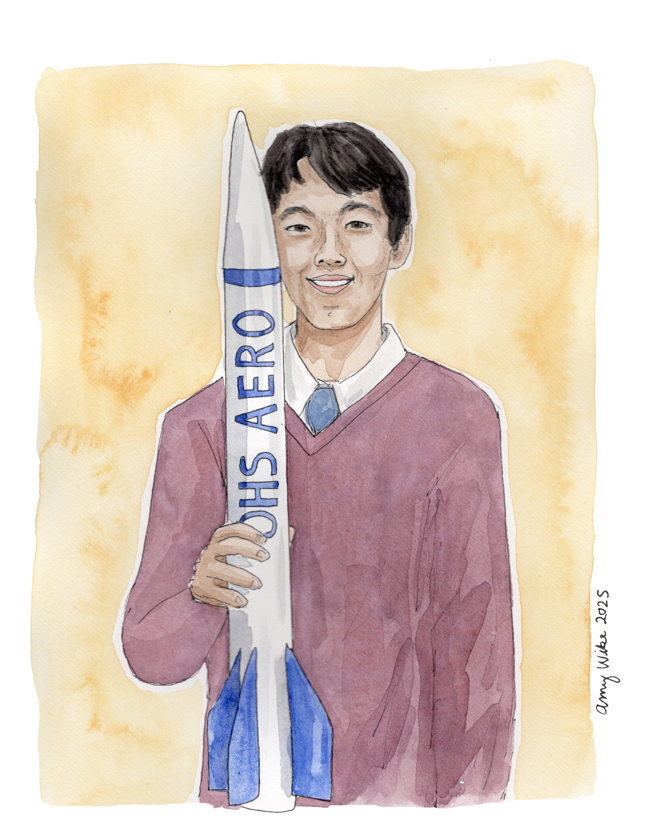Taming the Oblique Wing: Improving Fuel Efficiency by Developing and Flight Testing an Oblique Wing Aircraft Utilizing a Novel Control Method
Kevin applied his passion for radio-controlled aircraft to a decades-old challenge in wing design
View Poster
Kevin Shen, 18, of Olympia, created a method to enhance the control and stability of oblique-wing aircraft for his Regeneron Science Talent Search engineering project. Increasing fuel efficiency is one of the main goals of airplane design. Decades ago, engineers discovered that setting a plane’s wings at an oblique angle to its body lowers its overall drag, making flight more efficient. However, oblique-wing aircraft are harder to control, limiting their progress.
For his project, Kevin programmed a flight computer to control an oblique-wing model airplane he designed and built using 3D-printed parts. The flight computer assesses the effect of various angles and acceleration states to automatically stabilize the oblique wing aircraft. Kevin’s flight tests showed that the flight system enabled better aircraft control and additional computational fluid dynamics simulations demonstrated reduced drag. His craft used 9.2% less fuel than a similar aircraft with a regular wing design

Kevin, the child of Wenjing Yan and Charles Shen, attends Olympia High School. He founded and leads the popular Olympia Aerospace Club to share his passion for flight. Kevin also played in his state’s 2023–24 4A tennis tournament and competes on the varsity tennis team.

Beyond the Project
Kevin enjoys launching rockets into the sky with his aerospace friends. He also battles his sister in speed-typing on his custom-built keyboard.
FUN FACTS: Kevin once 3D-printed several prosthetic fingertips. They were a gift for a fellow flight enthusiast who had lost a fingertip in a model airplane accident.

